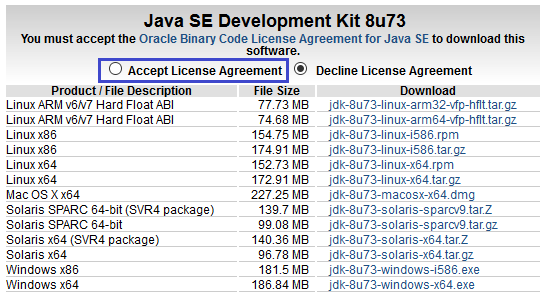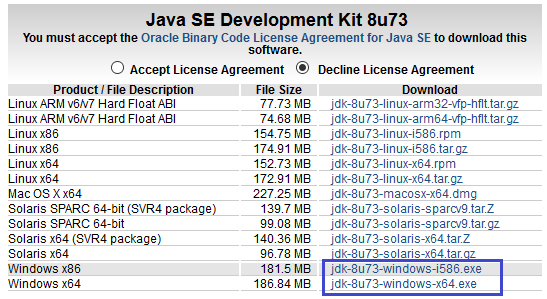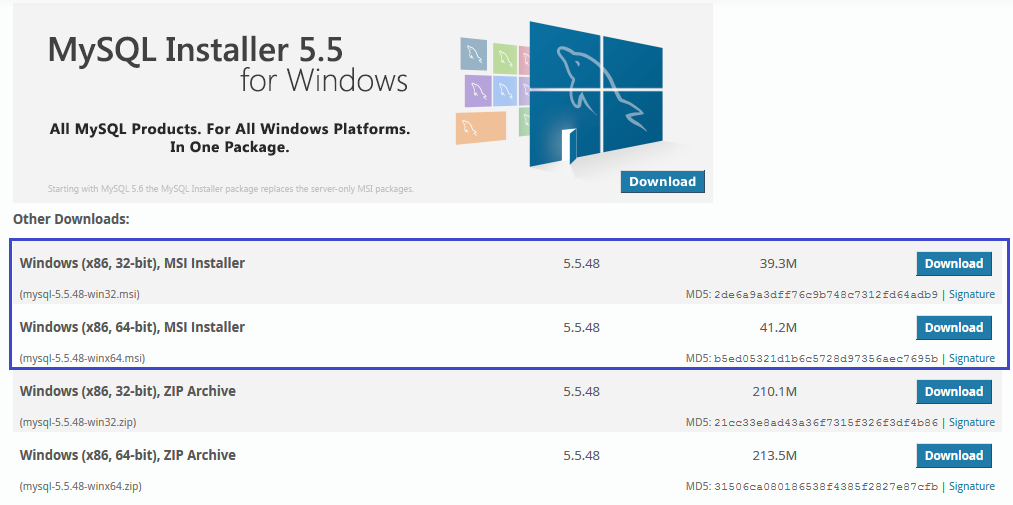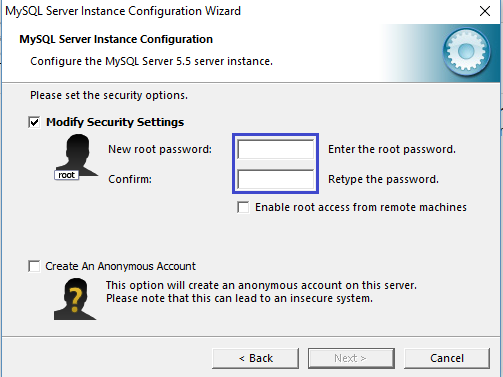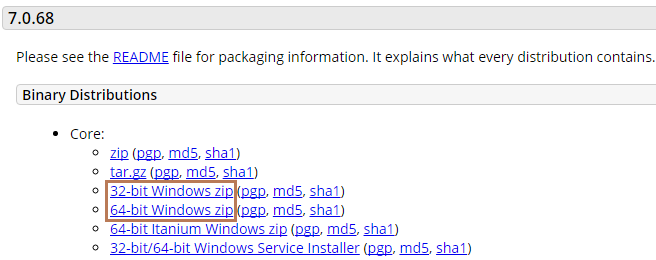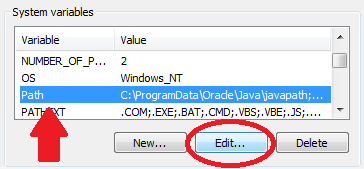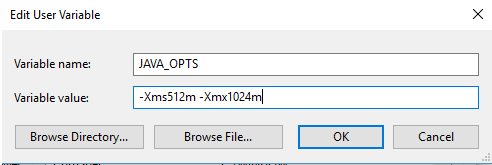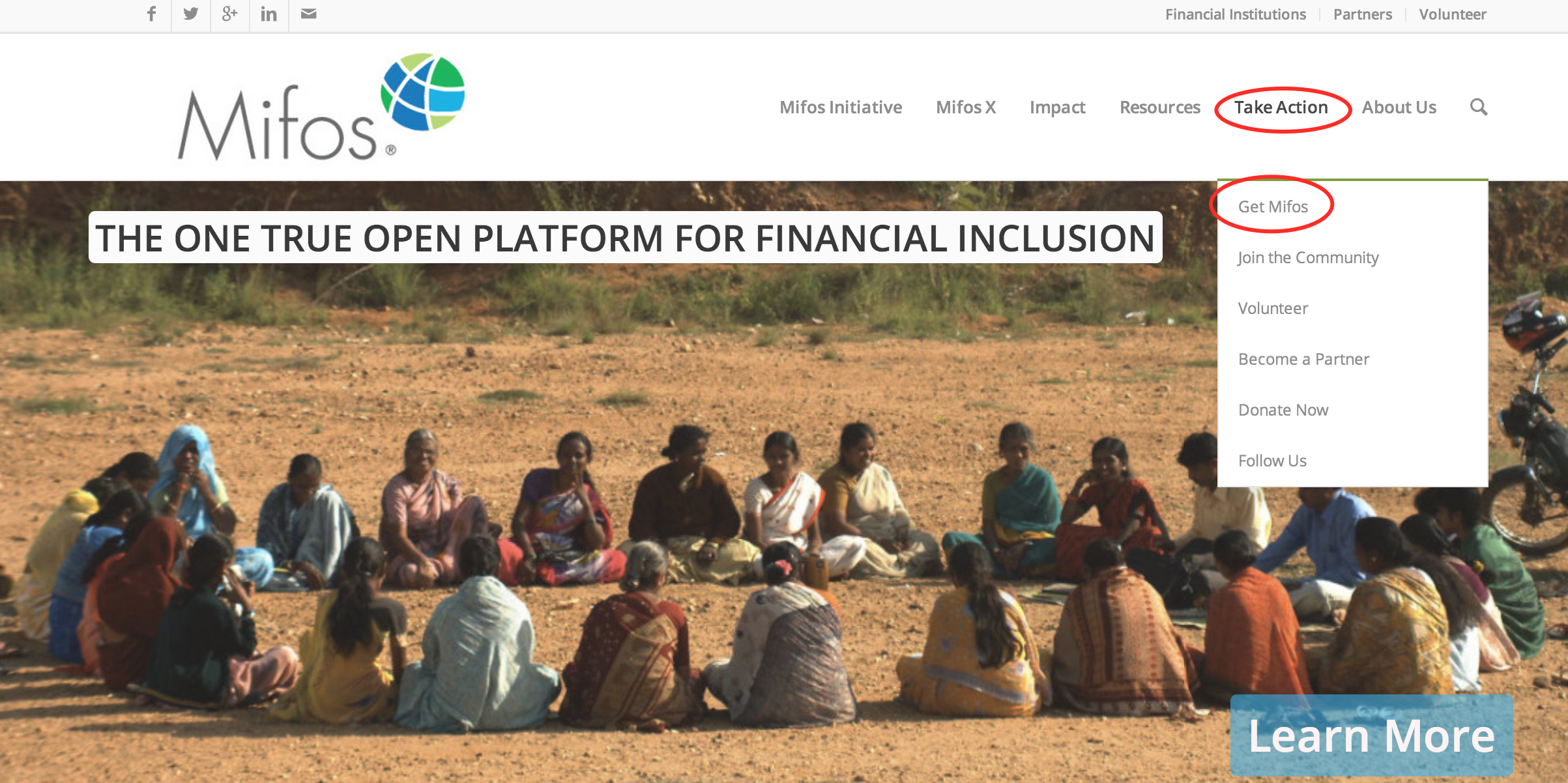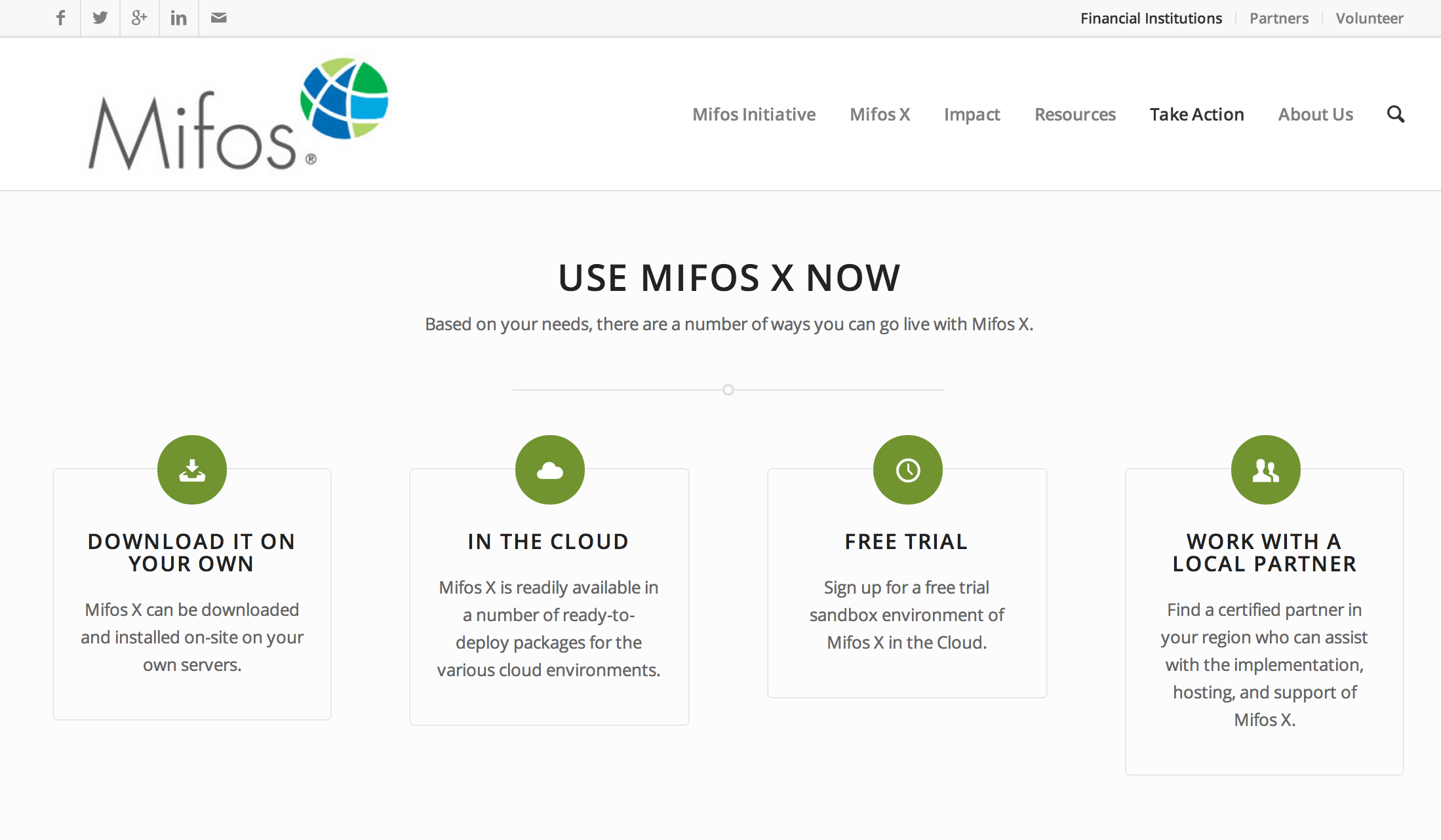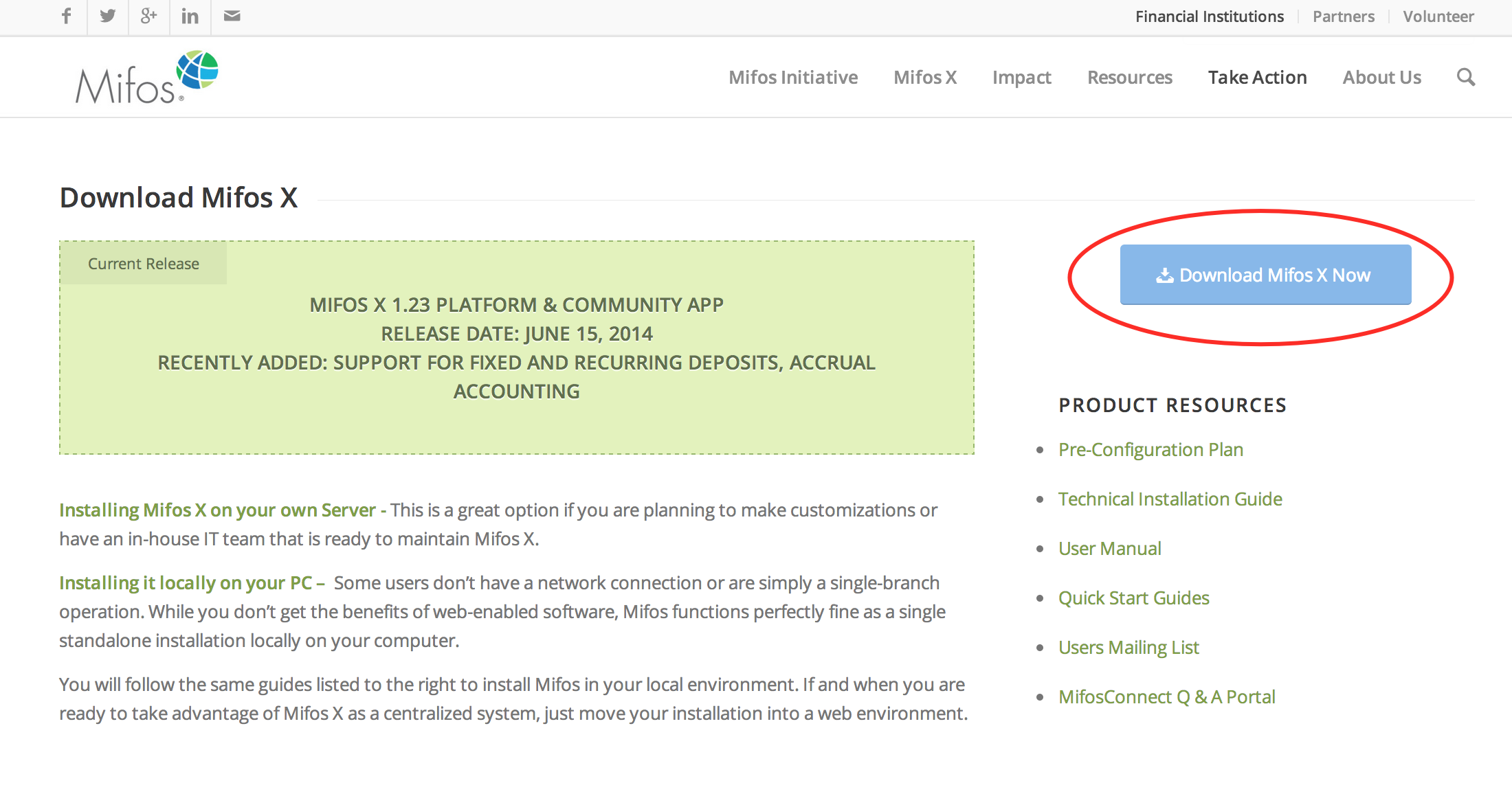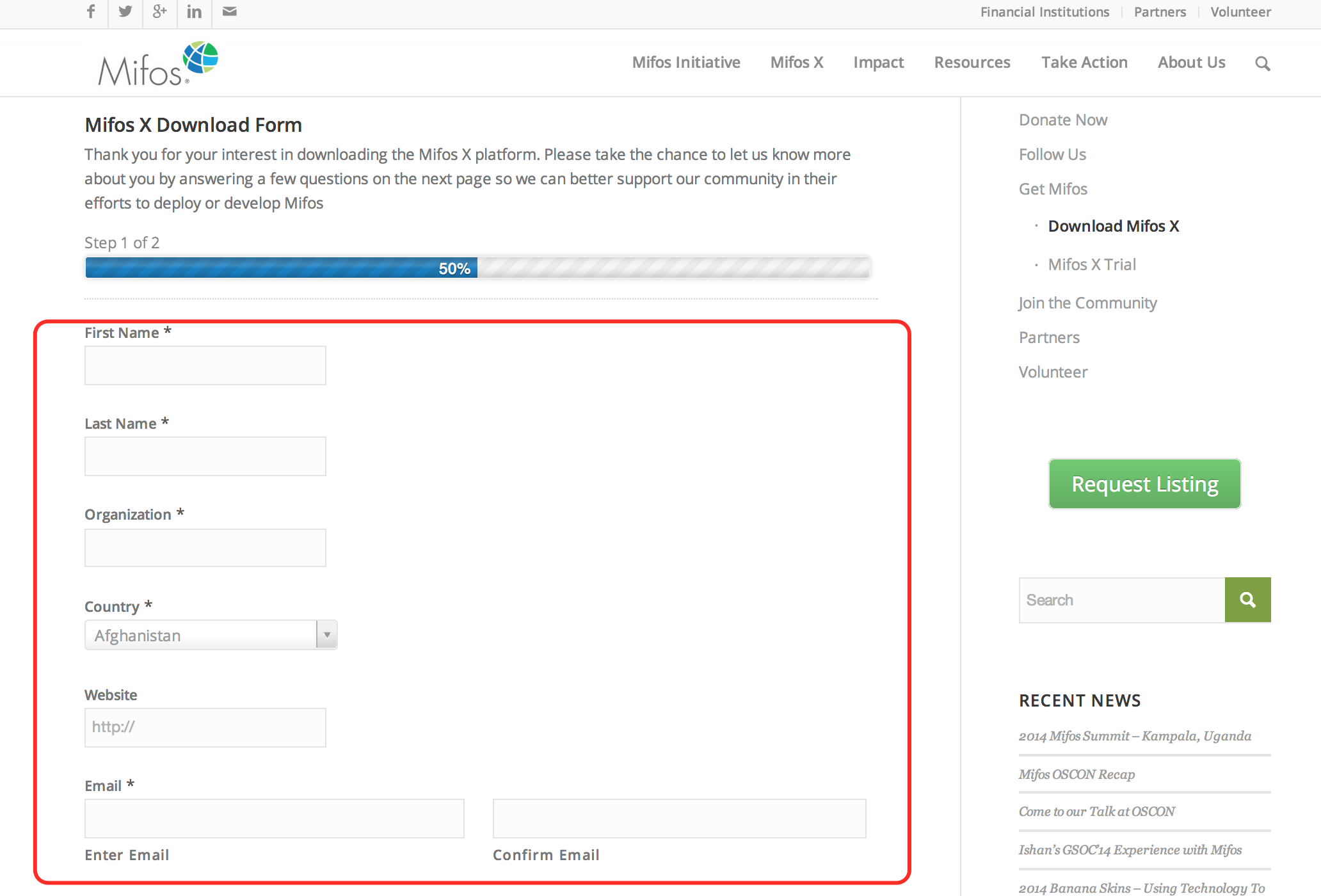Mifos X Installation on Windows
For a video guide click on the link below
| On this page:
|
Prerequisite SoftwareNote the software and versions included below are a mandatory prerequisite
|
|---|
| |
|---|---|
1) Before beginning, uninstall any existing versions of Java currently on your computer. | 2) In your web browser, go to http://www.oracle.com/technetwork/java/javase/downloads/jdk8-downloads-2133151.html, to download JAVA 1.8. |
3) Oracle requires that you read the license agreement, then click the button labeled Accept License Agreement. | 4) Click the link to download the version for your system architecture i.e. Windows x86 for 32bit or Windows x64 for 64bit. |
5) Save the Java installation file to your computer | 6) Run and install the Java file. |
| |
|---|---|
1) In your web browser, go to http://dev.mysql.com/downloads/mysql/5.5.html#downloads to download MYSQL server v5.5. Click the link to download the version for your system architecture i.e. Windows x86 for 32bit or Windows x64 for 64bit. | 2) You can skip this option by clicking the link at the bottom of the page that says No thanks, just start my download.
|
3) Run the MySQL installation file. Click on the Typical button and then click on Next button.
| 4) During MySQL installation, use Advanced Configuration > Show Advanced Options and set the MySQL ROOT Password to mysql. Then click on the Save button. This will set your username to root and your password to mysql. |
| |
|---|---|
1) In your web browser, go to http://tomcat.apache.org/download-70.cgi to download Tomcat 7. >> Under the section Binary Distributions>>Core, click on the link 32-bit windows zip or 64-bit windows zip (depending on your system architecture) to download.
| 2) Extract the apache-tomcat-7.0.68.zip.
|
4) This is the folder once apache-tomcat-7.0.68 gets extracted: | 5) Copy and paste the apache-tomcat-7.0.68 folder to the c:\ drive, then rename it tomcat. |
| |
|---|---|
1) Open your Environment Variables: | 2) Create the JAVA_HOME variable:
|
3) Edit the PATH variable:
| 4) Create the JAVA_OPTS variable:
|
| |
|---|---|
1) Go to http://mifos.org/ from your web browser and navigate to Take Action >> Get Mifos | 2) Click on the "DOWNLOAD IT ON YOUR OWN" link |
3) Click on "Download MifosX Now" | 4) Fill out the Mifos Download Form with your information, then click the Next Page button. The download will start automatically. Note You can skip the form by scrolling to the bottom of the page and clicking on: No thanks. I would just like to download Mifos without providing additional information. However, we are able to understand and serve you better if you provide details of your organization.
|
5) You will automatically be redirected to a download page for Mifos on the Sourceforge website. Here you will be prompted to download a ZIP file containing the Mifos application. Note You can also download other versions directly from: https://sourceforge.net/projects/mifos/files/Mifos%20X/ | 6) Once you have download the Mifos ZIP file, extract it to a new folder on your computer. Remember this location, as you will need to refer to it later. |
| |
|---|---|
1) Download HEIDISQL from http://www.heidisql.com/download.php and save the installation file to your computer. | 2) Run the Heidisql installation file and setup Heidisql: i) Click on local and enter the MySQL password (mysql) in the Password field. ii) Click on the Save button. iii) Click on the Open button. |
4) Copy the following database command and paste it into the large white box titled Query | 5) Click on the Run button to execute the query. |
6) In the heidisql menu bar, click on File>>Load SQL file... | 7) In the Load SQL file window:
Run the first-time-install script, by clicking Run Query button. Once it's successful close the heidisql application. |
| |
|---|---|
1) Setting up the Lib folder a) Download the mysql jdbc 5.1.27 jar file from http://central.maven.org/maven2/mysql/mysql-connector-java/5.1.27/mysql-connector-java-5.1.27.jar b) Once it's downloaded, copy the file and paste it to the Tomcat>>lib folder. Note If the tomcat-jdbc.jar file is not available in the tomcat>>lib folder it can be downloaded from: http://www.java2s.com/Code/JarDownload/tomcat-jdbc/tomcat-jdbc.jar.zip | 2) Generate keystore Generate a new keystore using the Java keytool : i) Open Command Prompt Note Once the keystore is created, it should be placed in your home directory. For Example: C:/Users/john/.keystore |
3) Configure server.xml page, a) Go to tomcat>>conf, then right click on the server.xml file and select Open with>>Notepad: to reflect your system and settings: reflect the username and password used in step 4 of the Install MySQL section above (for e | <?xml version='1.0' encoding='utf-8'?> <GlobalNamingResources> <Resource type="javax.sql.DataSource" <Service name="Catalina"> <Connector protocol="org.apache.coyote.http11.Http11Protocol" <Engine name="Catalina" defaultHost="localhost"> <Realm className="org.apache.catalina.realm.LockOutRealm"> <Host name="localhost" appBase="webapps" unpackWARs="true" autoDeploy="true"> <Valve className="org.apache.catalina.valves.AccessLogValve" directory="logs" |
4) Save the modified server.xml page Press Ctrl + S or File>>Save. | 5) Close Notepad. |
Note
If your any of the server port connections are using port number 443, then you need to change your port number to 8443 in server.xml:
port="443" maxThreads="200" scheme="https" to port="8443" maxThreads="200" scheme="https"
| |
|---|---|
1) fineract-provider.war to tomcat>>webapps folder 1-a) Copy "fineract-provider.war" file from downloaded fineract-platform folder
|
1-b) Paste it to tomcat\webapps folder
|
2) Community-app to tomcat>>webapps folder 2-a) Copy "community-app" folder from downloaded Mifos-platform>>apps folder:
2-b) Paste it to tomcat\webapps | 2-c) Rename existing ROOT folder to OLDROOT under tomcat\webapps\ 2-d) Rename community-app folder to ROOT |
3) api-docs to tomcat>>webapps>>ROOT folder 3-a) Copy "api-docs" folder from downloaded Mifos-platform>>api-docs folder:
| 3-b) Paste it to tomcat\webapps\ROOT folder |
| |
|---|---|
1) Create .mifosx folder in home directory & paste Pentaho folder into it Use command prompt for creating .Mifos folder i.e md .mifosx | 2) Copy PentahoReports folder from downloaded Mifos-platform folder |
3) Paste it to .mifosx folder
| |
| |
|---|---|
1) Go to "C:\tomcat\bin" folder, Run "startup.bat" by clicking it.
Note: You can create a shortcut of "startup.bat" on your desktop and rename it as start mifosx. | 2) Application gets started
|
3) Once server starts, will display as "Server startup in xxxxx ms"
| 4) You could access through any internet browser:- and if you are using server port number as 8443 then you could access it @ https://localhost:8443 |
5) For the first time access it will display as shown below, please click on proceed:-
| 6) Login into Mifos, Provide user name: mifos and password as: password
|
Stop Mifos X |
|---|
| You could stop by pressing ctrl+c key on tomcat server window & Mifos X gets stopped. |
- Platform application should be available @ https://[public DNS]/fineract-provider/api/v1/offices?tenantIdentifier=default&pretty=true, and this API should return JSON format text with office details
- API docs should be available @ https://[public DNS]/api-docs/apiLive.htm
Related articles
